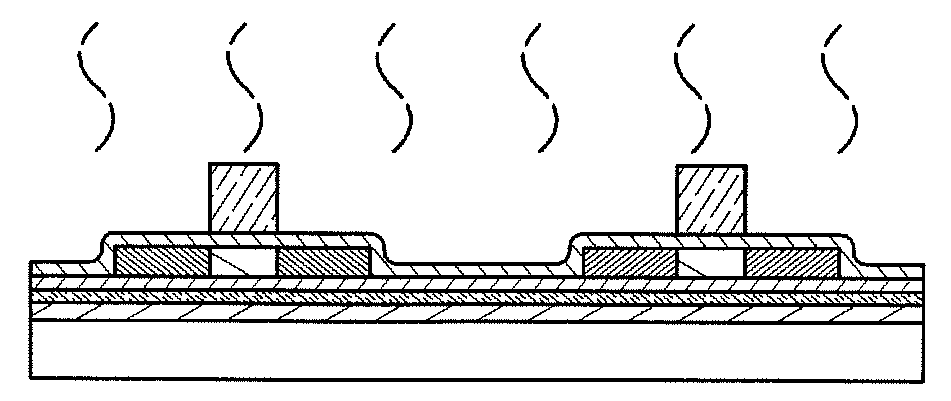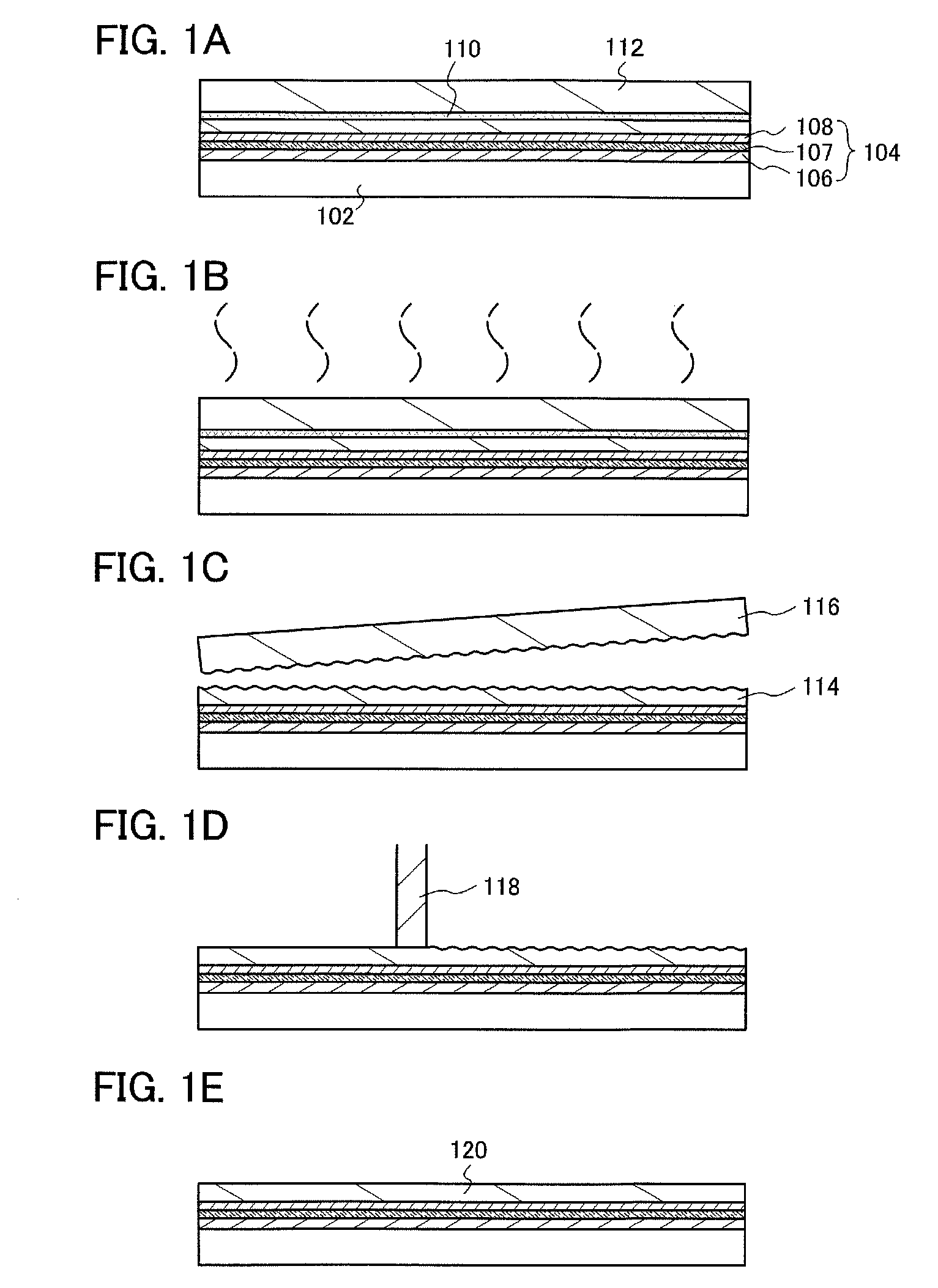Manufacturing method of semiconductor device
- Summary
- Abstract
- Description
- Claims
- Application Information
AI Technical Summary
Benefits of technology
Problems solved by technology
Method used
Image
Examples
embodiment mode 1
[0059]In Embodiment Mode 1, a manufacturing method of a semiconductor device which uses a semiconductor substrate in which a single crystal semiconductor layer is fixed to a supporting substrate with a buffer layer interposed therebetween, will be described.
[0060]First, a method of forming a single crystal semiconductor layer over a supporting substrate will be described.
[0061]A single crystal semiconductor substrate 112 in which a separation layer 110 is formed in a region at a predetermined depth and a supporting substrate 102 are attached with a buffer layer 104 interposed therebetween so as to be bonded to each other (see FIG. 1A).
[0062]As the single crystal semiconductor substrate 112, a semiconductor substrate of silicon, germanium, or the like, a compound semiconductor substrate of gallium arsenide, indium phosphide, or the like, or the like can be used. As for a single crystal silicon substrate which is a typical example of the single crystal semiconductor substrate, circula...
embodiment mode 2
[0195]In Embodiment Mode 2, a semiconductor substrate having another structure, which can be used for manufacture of a semiconductor device according to the present invention, will be described.
[0196]FIG. 16A illustrates an example in which the buffer layer 104 is formed on the supporting substrate 102. Between the single crystal semiconductor layer 120 and the supporting substrate 102, the insulating layer 106, an insulating layer 154, and an insulating layer 152 are formed from the single crystal semiconductor layer 120, and the stacked structure of these layers forms the buffer layer 104.
[0197]The insulating layer 152 may be an insulating layer similar to the insulating layer 107 and preferably includes at least one layer of insulating layer containing nitrogen. For example, at least one layer of insulating layer containing nitrogen as its composition such as a silicon nitride layer, a silicon nitride oxide layer, or an aluminum nitride layer is formed. When the insulating layer ...
embodiment mode 3
[0203]In Embodiment Mode 3, transistors having a different structure from the above embodiment mode and a manufacturing method thereof will be described. Hereinafter, description is made with reference to the cross sectional views of FIGS. 4A to 4E, FIGS. 5A to 5D, and FIGS. 6A to 6C. Note that a method of manufacturing an n-channel transistor and a p-channel transistor at the same time will be described in this embodiment mode.
[0204]First, as illustrated in FIG. 4A, a semiconductor substrate is prepared. In this embodiment mode, the semiconductor substrate manufactured through the steps of FIGS. 1A to 1E in Embodiment Mode 1 is used. In other words, the semiconductor substrate in which the single crystal semiconductor layer 120 is fixed over the supporting substrate 102 with the buffer layer 104 interposed therebetween is used. The single crystal semiconductor layer 120 is a semiconductor layer part of which is re-single-crystallized through melting by laser beam irradiation. Note ...
PUM
 Login to View More
Login to View More Abstract
Description
Claims
Application Information
 Login to View More
Login to View More - R&D
- Intellectual Property
- Life Sciences
- Materials
- Tech Scout
- Unparalleled Data Quality
- Higher Quality Content
- 60% Fewer Hallucinations
Browse by: Latest US Patents, China's latest patents, Technical Efficacy Thesaurus, Application Domain, Technology Topic, Popular Technical Reports.
© 2025 PatSnap. All rights reserved.Legal|Privacy policy|Modern Slavery Act Transparency Statement|Sitemap|About US| Contact US: help@patsnap.com



